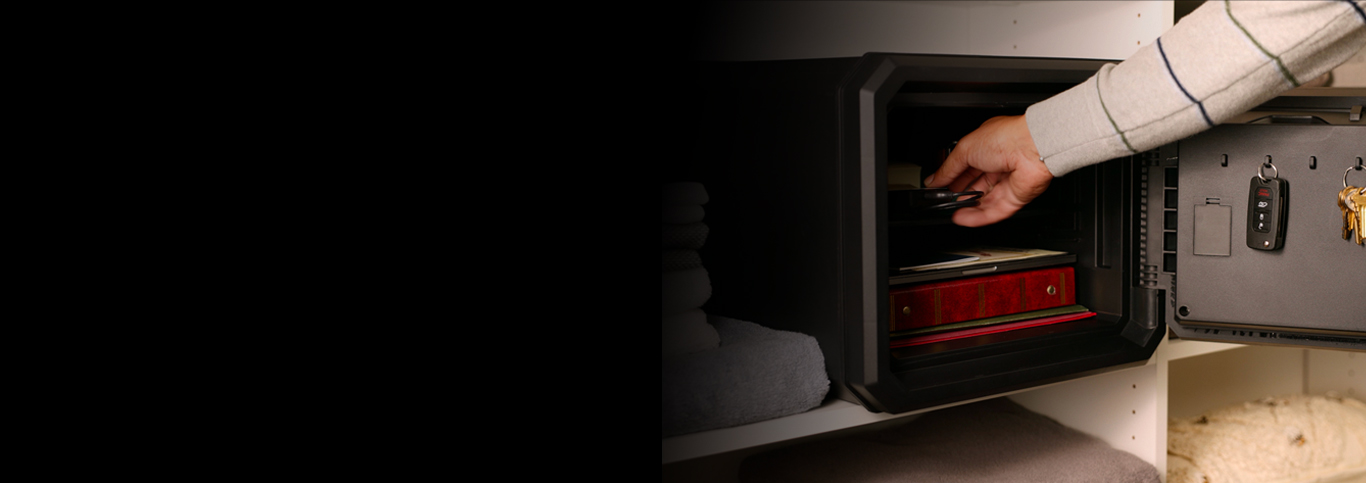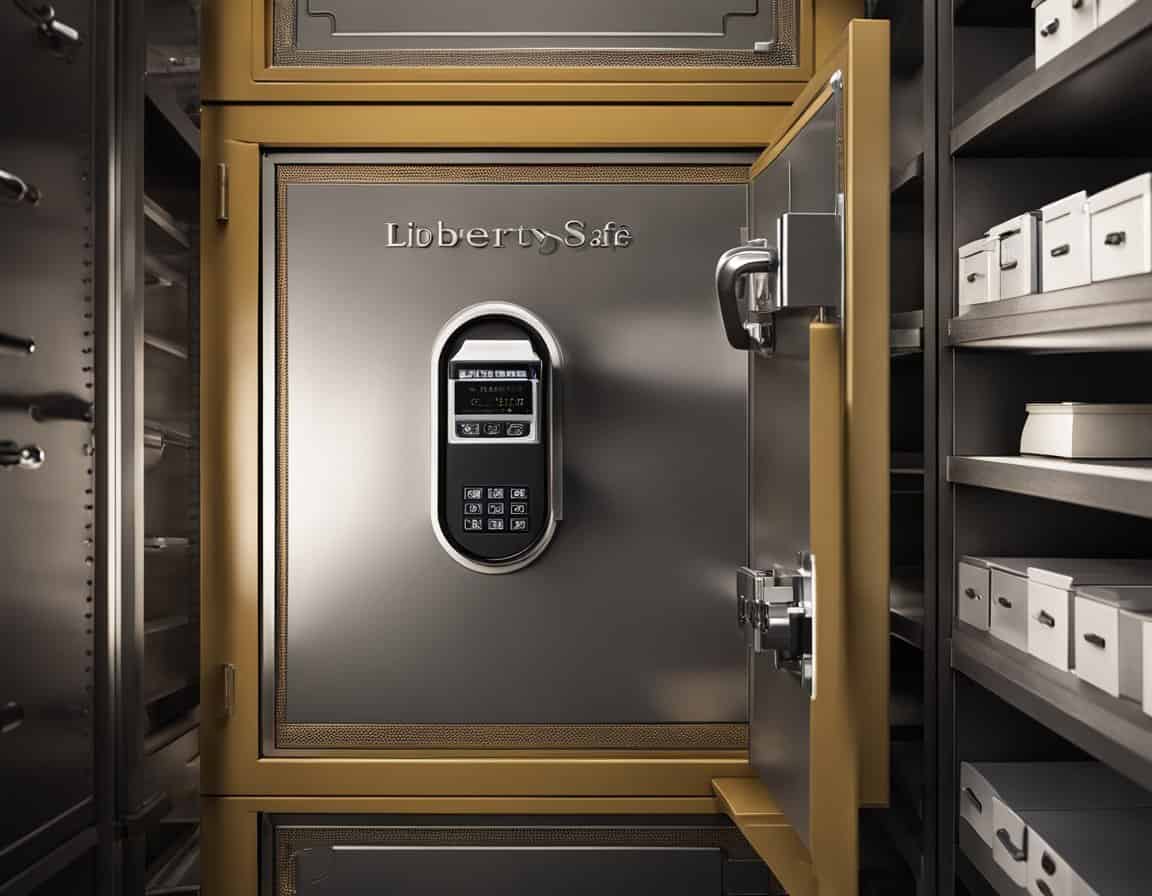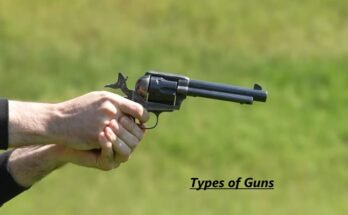Secure a pistol safe by bolting it to the floor and wall, and use a tamper-resistant lock. Choose a location that’s hidden yet accessible to you.
Pistol safes are essential for gun owners who prioritize safety and security. A well-secured pistol safe prevents unauthorized access and protects your firearm from theft or misuse. Ensuring your pistol is safely stored also helps to avoid potential accidents within the home, particularly if children are present.
Security measures like biometric locks, combination pads, or key entry all contribute to the safekeeping of your firearm. Regularly inspecting your safe and updating access codes add an extra layer of security. When selecting a safe, consider size, material strength, and the type of locking mechanism as key factors for effective firearm storage. Remember that consistent maintenance and responsible handling of the access mechanisms are as crucial as the physical installation of the pistol safe itself.
The Importance Of Securing A Pistol Safe
Keeping firearms secure is critical for safety and peace of mind. A pistol safe ensures that guns stay out of the wrong hands. It guards against accidents and thefts. It’s essential to understand proper safe security.
Risks Of Inadequate Security
Unsecured pistols pose serious risks. Accidental discharges can occur, leading to injuries or fatalities. Additionally, stolen firearms can be used in crimes. This can be traced back to the original owner, compounding tragedy with liability.
- Children’s access: Curious kids may find and mishandle firearms.
- Theft: Burglars can steal unsecured guns, posing a public threat.
- Unauthorized use: Friends or relatives might use a gun inappropriately.
Legal And Ethical Considerations
Safeguarding guns is not just a personal preference but a legal mandate in many places. Negligence can lead to liability in case of an incident. Responsible ownership involves securing firearms effectively.
| Legal Aspect | Requirement |
|---|---|
| Storage laws | Laws often dictate how and where firearms must be stored. |
| Child access prevention | Owners must prevent minors from accessing firearms. |
| Liability for misuse | Improper storage can lead to liability if a firearm is misused. |
Being ethically responsible means preventing potential harm. Use safe locking mechanisms and position safes out of sight. Train all household members on the importance of gun safety. Proper security protects everyone.

Credit: www.sentrysafe.com
Types Of Pistol Safes
Keeping a pistol safe is vital for both security and peace of mind. Various safes cater to different needs and preferences. Understand the types to choose the right one.
Biometric Safes
Biometric safes use unique physical characteristics for access. Fingerprint identification is common. They offer quick and personalized security.
- Quick access: Opens with a touch, ideal for emergencies.
- User-friendly: Easy setup for multiple fingerprints.
- High security: Hard to hack, as each fingerprint is unique.
Combination Lock Safes
Combination locks are traditional and reliable. They use a numerical code to unlock. No keys needed, just a good memory.
- Durable, with no batteries required.
- Change your code as needed for added security.
- Multiple options with dials or electronic keypads.
Key Lock Safes
Key lock safes are straightforward and effective. A physical key unlocks them. They provide a classic, fail-safe option.
| Features | Advantages |
|---|---|
| Simple design | No complex technology needed |
| Backup key | Useful if electronic elements fail |
| Cost-effective | More affordable than high-tech safes |
Location Matters: Where To Place Your Safe
Understanding the perfect spot for your pistol safe can make all the difference. The key aspects to consider are quick access, concealment, and the surrounding environment. Let’s delve into why ‘Location Matters’ and unlock the best places to secure your firearm.
Strategic Placement For Quick Access
When safety and defense are priorities, your pistol safe’s position is crucial. It must be readily accessible, ensuring no precious seconds are lost in an emergency. Opt for locations that blend convenience and security, like a bedside drawer or a dedicated shelf within arm’s reach.
- Bedroom: Near the bed for overnight access
- Living Areas: Hidden yet reachable when you’re most active
- Entry Points: Close to doors for quick retrieval if needed
Concealment Vs. Accessibility
Striking the right balance between keeping your pistol safe hidden and easily accessible is a must. Smart concealment deters unauthorized access but shouldn’t compromise on the swiftness of reaching your firearm.
| Concealment Options | Accessibility Rating |
|---|---|
| Bookshelves with hidden compartments | High |
| False bottoms in drawers | Medium |
| Behind picture frames | Low |
Environmental Factors
Lastly, environmental factors cannot be overlooked. Humidity, temperature, and potential natural disasters affect your safe’s integrity. Selecting a spot away from elements like water or fire hazards keeps your safe and its contents protected.
- Avoid placements near windows or damp areas
- Consider climate control for extreme temperatures
- Elevate the safe to prevent water damage in flood-prone zones
Bolting Down Your Safe
Keeping your firearm secure is crucial. Bolting down your safe is a smart step.
This ensures thieves cannot simply walk away with it.
Choosing The Right Anchors And Bolts
The right hardware is key for a solid install.
- Assess your floor type: Is it wood or concrete?
- Pick the best anchors and bolts for your floor.
- Use heavy-duty materials to withstand force.
Step-by-step Installation Guide
- Locate the safe’s bolt-down holes.
- Mark these spots on your floor.
- Drill holes into the floor.
- Insert the anchor bolts and tighten.
- Ensure the safe is level and secure.
Pitfalls To Avoid
Watch out for common mistakes.
- Avoid shallow drilling; it weakens the hold.
- Double-check bolt sizes for a snug fit.
- Never skip sealing bolt holes against moisture.
- Forgetting to test stability after installation is risky.
Enhancing Security With Alarm Systems
Enhancing Security with Alarm Systems is a smart move for anyone seeking to fortify their pistol safe. Alarm systems serve as essential deterrents for unauthorized access, alerting homeowners instantly in case of a security breach. This post guides you to boost your safe’s security layer by integrating effective alarm solutions.
Types Of Alarms To Consider
Selecting the right alarm can make all the difference in securing your pistol safe:
- Vibration Alarms: They detect movement and send an alert.
- Door Contact Alarms: Activated when the safe door is opened.
- Keypad Alarms: Triggered by incorrect code entries.
Integration With Home Security Systems
Link your pistol safe alarm with your house security:
- Check compatibility between the safe and home system.
- Connect both systems, often through Wi-Fi or Bluetooth.
- Set up notifications to receive alerts wherever you are.
Diy Vs. Professional Installation
Choose between DIY or professional help based on your skills and budget:
| DIY Installation | Professional Installation |
|---|---|
| Cost-effective, good for simple systems. | Higher cost but provides expert assurance. |
| Requires basic technical knowledge. | Useful for complex integrations. |
| Time-consuming if unfamiliar with the process. | Time-efficient, completed by experienced technicians. |

Credit: ahomeselection.com
Best Practices For Safe Access And Maintenance
Understanding the best practices for safe access and maintenance of your pistol safe is crucial. It not only ensures that firearms are secured but also that they are accessible when needed. These practices protect your investment in safety. Follow these guidelines for peace of mind and effective safekeeping.
Regularly Update Access Codes
Keeping your access codes updated is a cornerstone of pistol safe security. Change your codes at least every six months. Use complex codes that blend numbers, symbols, and letters. Never share these with anyone outside trusted circles. Bold commitment to these steps will prevent unauthorized access.
- Do not use easily guessable codes, such as birthdays or anniversaries.
- Create unique codes that are not repetitive or sequential.
- Use a password manager to keep track of your codes securely.
Safe Handling During Access
Every interaction with your pistol safe should prioritize safety. Ensure the safe is firmly mounted to avoid tipping. Keep fingers off the trigger while removing firearms. Always assume a gun is loaded. Treat the firearm with the respect and caution it demands for your safety and others’.
- Mount the safe in a stable location.
- Follow firearm handling protocols when accessing guns.
- Verify the chamber is empty upon removing the gun.
Routine Safe Maintenance Checks
Routine checks are integral to your pistol safe’s longevity and reliability. Each month, inspect the locking mechanisms, battery life, and overall condition. Address any signs of wear and tear promptly. Proper maintenance ensures seamless operation and extends the life of your safe.
| Maintenance Task | Frequency | Notes |
|---|---|---|
| Battery Check | Monthly | Replace if below recommended voltage. |
| Lock Mechanism Test | Bi-monthly | Ensure locking pins operate smoothly. |
| Interior Inspection | Monthly | Look for signs of moisture or rust. |
Considerations For Multiple Users
When securing a pistol safe for multiple users, think about everyone’s ease of access while maintaining security. A shared environment complicates security. Nonetheless, tech advances offer solutions. Set up individual access methods. Educate each user on safe use. Regularly review access logs to ensure security.
Setting Up Multiple Fingerprints or CodesSetting Up Multiple Fingerprints Or Codes
Personalize access for each user by setting up unique fingerprints or codes. This customization prevents unauthorized users from accessing the safe. Many pistol safes support multiple fingerprints or passcodes; use this feature to your advantage.
Represent Setting Up Steps in Ordered List- Open the safe using the admin code.
- Enter the setup mode as per your safe’s manual.
- Enroll new fingerprints or set individual codes for each user.
- Test each credential to ensure correct setup.
Training For Safe And Responsible Access
Even with the best technology, user education is critical. Conduct regular training sessions on how to operate the safe responsibly. Discuss scenarios where the safe may be accessed and who can retrieve or deposit items.
Bullet-points for Key Training Points- Safe opening and closing procedures.
- Emergency protocols for lock-out situations.
- Reminders to keep access credentials confidential.
Monitoring Access Logs And Activity
Maintain oversight by monitoring access. Many modern safes record user activity. Regularly check who opened the safe and when. This tracking ensures there are no unauthorized attempts to gain access.
Table for Sample Access Log Data| User | Date | Time | Action |
|---|---|---|---|
| User 1 | 03/25/2023 | 09:32 AM | Opened |
| User 2 | 03/25/2023 | 07:15 PM | Closed |

Credit: www.homedepot.com
Frequently Asked Questions Of How To Secure A Pistol Safe
How Do You Keep A Handgun Safe?
To keep a handgun safe, always store it unloaded in a locked gun safe or cabinet. Use trigger locks and keep ammunition separate. Ensure easy access only to authorized users and regularly review gun safety practices.
How Do You Secure A Gun Safe?
To secure a gun safe, mount it to the floor or wall, use high-quality locks, conceal its location, employ alarm systems, and routinely change combinations or keys.
Should I Bolt Down My Gun Safe?
Yes, bolting down your gun safe is advisable to prevent theft and ensure it remains stationary during unauthorized attempts to move or open it.
Where Not To Put A Gun Safe?
Avoid placing a gun safe in garages, damp basements, visible areas, and near windows or exterior walls. Choose a secure, concealed, and climate-controlled location instead.
Conclusion
Securing your pistol safe effectively is paramount for firearm safety and peace of mind. By implementing the tips discussed, you can ensure only authorized access and deter potential threats. Remember to routinely check your security measures for reliability. Protecting your guns is both a responsibility and a commitment to safety.



